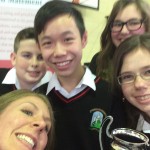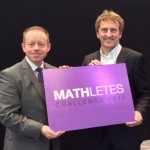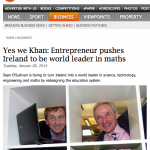“Is it true that, in America, they think eastern Europe is like, just a single country? And they don’t know the difference?” I was in a hostel in Budapest yesterday and overheard (re: eavesdropped upon) a German girl asking a Canadian girl this. The Canadian went on to explain that, while she wasn’t sure about that in particular, the American outlook is much more parochial, and that they (we) don’t care much about the rest of the world.
Now, unfortunately, I admit there is probably some truth to that characterization (though I hope most of us are at least aware that there is more than one country in eastern Europe). Still, I found myself somewhat annoyed by a description claiming categorically that “Americans are ___”. In America we are many things at the same time, often paradoxically so, and it is the sum of all of these moving parts that makes for our dynamic and diverse society.
So, for a concluding blog entry, I did *not* want to write about how I learned that “Ireland is X, unlike America, which is Y”. I have seen over the past year that Ireland is a dynamic and increasingly diverse place in its own right, which is unfair to paint in such broad strokes. Still, in the spirit of a final blog post, here are some relatively superficial observations:
- The rounds system is both a great way to make friends and a terrible model for teaching principles of fiscal responsibility (I blame the rounds system for the collapse of the Celtic Tiger)(j/k)
- The west of Ireland, from Donegal in the north down to Kerry in the south, is as beautiful as anywhere I’ve been in the world (especially when you get the weather)
- Diving in Ireland is beautiful, but, without a drysuit, it is freezing (especially in March!)
- I’ve tried, and I’m sorry, but I still don’t get what the fuss over Eurovision is about.
- The Guinness *does* taste better in Ireland
In all seriousness, as my time in Ireland comes to a close, I am both anxious and excited to start taking my next steps towards something resembling a stable career path. I’ll be starting a PhD in physics at Harvard next year, and I will also be affiliated with the Harvard/MIT Division of Health Sciences and Technology training program. I hope to build upon my background in physics, and my more recent work in nanoscience and bioengineering, to explore how physical principles and tools can be used to understand and manipulate biological systems. Two particular research directions I’m interested in are 1) building tools for precision measurement and control of biological systems, and 2) understanding how we can do a better job of “building with biology”. I think that progress in understanding intelligence (both natural and ‘artificial’), as well as progress in our ability to manage the living environment of our planet, are two major trends which will immensely influence (if not dictate) the future of our world. I am hopeful that the coming years will leave me well positioned both to help realize the potential benefits of this research as well as to caution against risks that the technologies it enables might carry.
I have been grateful for the time I have had in Europe, and especially in Ireland, to explore both intellectually and geographically (I still have one last adventure planned for the summer). But I am very ready at this point to put down some roots and be in one place for longer than a year. I read recently that, when Robert Frost gave a speech at JFK’s inauguration, he leaned in to him and said something to the effect of: “You’ve something of Harvard and something of Ireland in you. Be more Irish than Harvard”. I can’t make any promises myself, but I will certainly remember my time here in Ireland fondly as I begin the next chapter.







